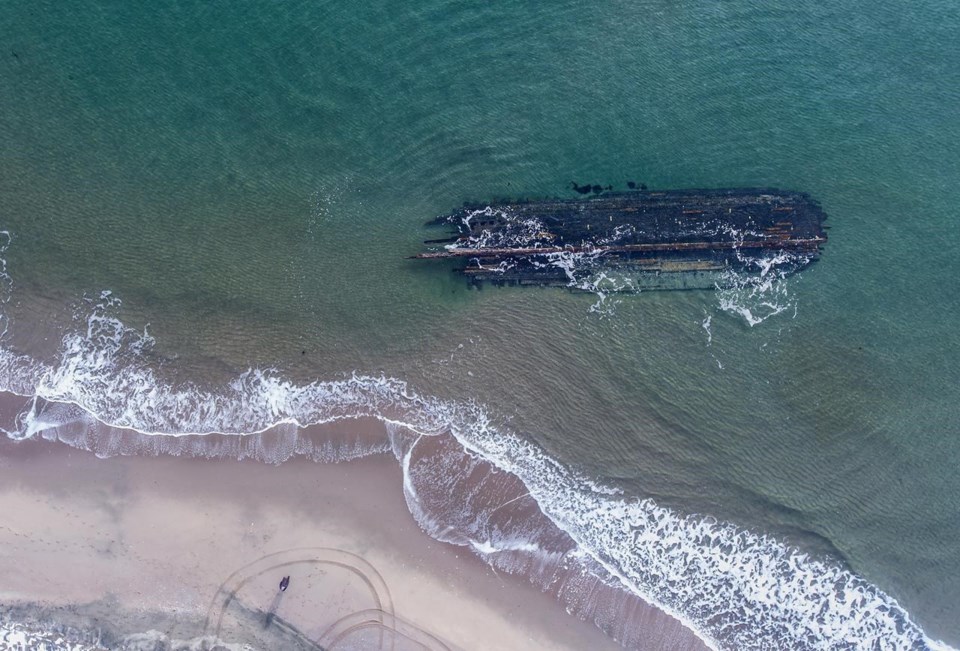ST. JOHN'S, N.L. — A shipwreck that appeared off the southwestern tip of Newfoundland likely doesn’t hold many secrets about the province's seafaring history, but local residents are still working to save it.
Jamie Brake, Newfoundland and Labrador's provincial archeologist, said Tuesday that while the massive overturned hull may not be of archeological significance, it's clearly of great importance to the community near the beach where it was first spotted.
Some local residents are hoping to pull the ragged ship out of the churning water and put it on display, he said.
"They're certainly approaching it with great respect, and they're in touch with us," Brake told reporters. "Their intention is to be stewards of this."
Residents say the wreck was first discovered on Jan. 20 by a man out hunting seabirds. He spotted a ghostly shadow just beneath the water and went home to tell his family about it. The shipwreck has since attracted attention and news coverage from as far away as the United Kingdom.
Brake and a small team visited the wreck on Saturday, which is just off a beach in a provincial park near Cape Ray, N.L., about 900 kilometres west of St. John's by highway. They took footage of and samples of the ship's remains, which will hopefully help determine when and where the ship was built.
Brake estimates the hull's remains are about 30 metres long, and he says there are indications the ship dates back to the 19th century — a period for which there is a rich archeological record of shipwrecks in the region. Therefore, it's unlikely much would be learned from preserving and studying it.
However, he admits that it is "a pretty amazing thing to see."
The wreck will either be destroyed by the ocean, or pulled ashore by the local community, which is anxious to preserve and display it, he added.
And the community seems intent on making sure it's the latter.
Wanda Blackmore, whose son Gordon first spotted the ship, says there is plenty of talk about saving the vessel and having future generations and tourists have the chance to see it.Â
"The hope is still there to have it preserved in some way, shape or form," she said.
This report by The Canadian Press was first published Feb. 6, 2024.
The Canadian Press



